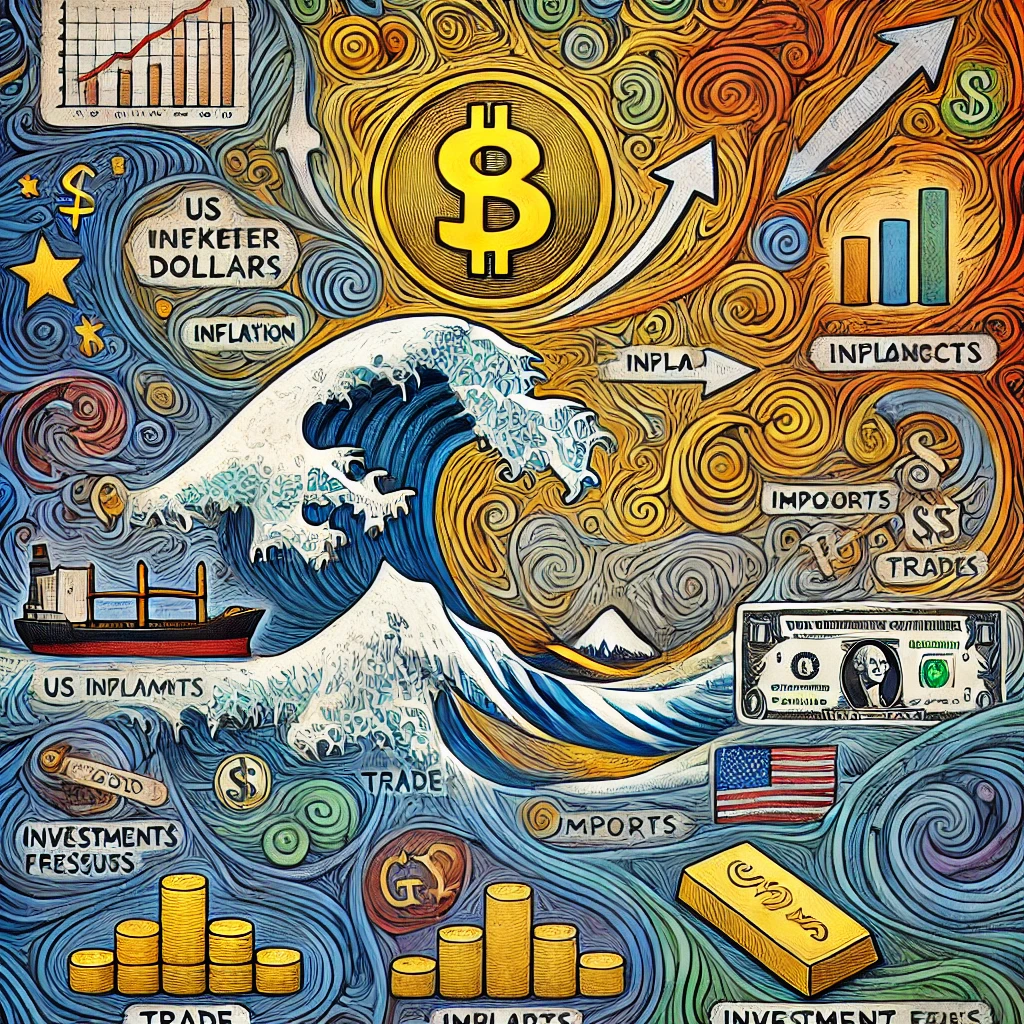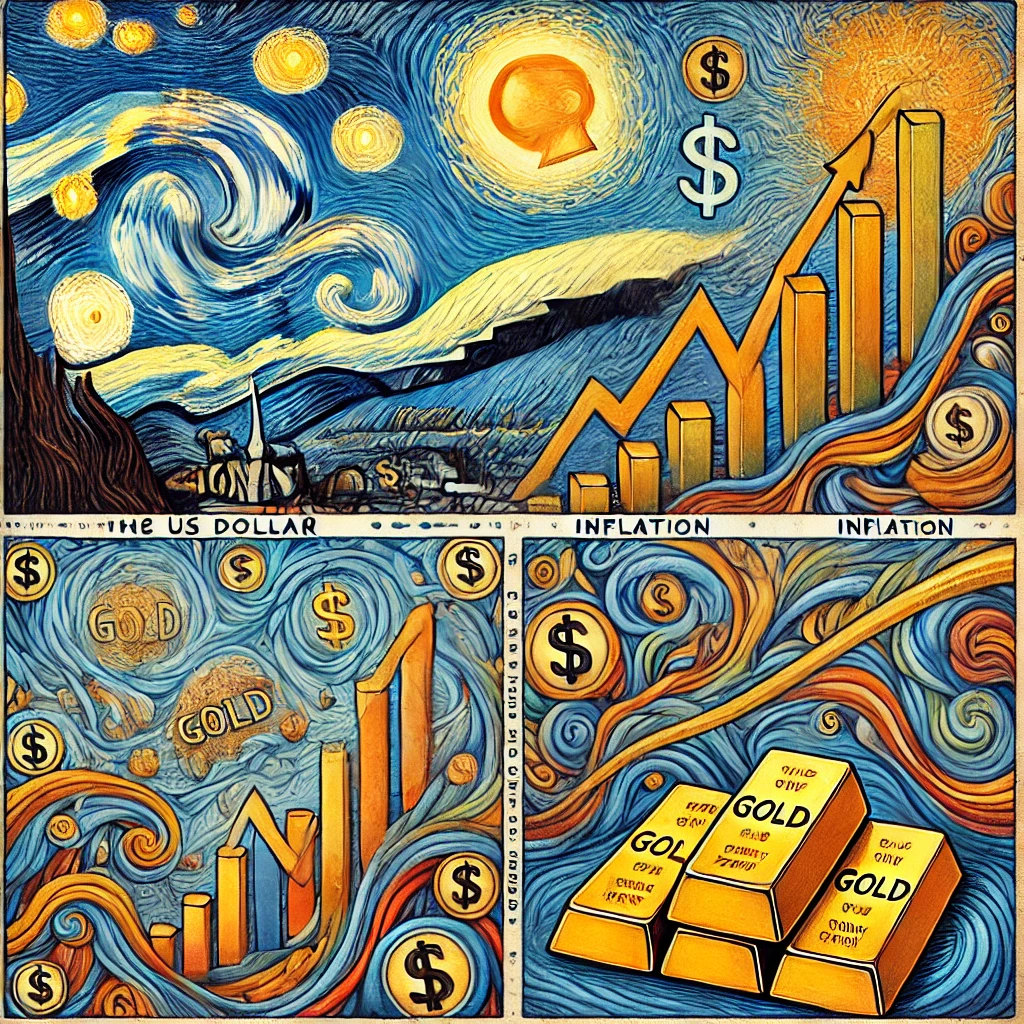The relationship between interest rates, the value of the US dollar in global trade and finance, and the price of gold is fascinating and complex. It has significant implications for investors, policymakers, and the economy. Understanding this relationship requires a thorough examination of how interest rates affect currency values, how changes in the dollar influence gold prices, and the broader economic context in which these dynamics unfold. This blog post aims to explain: “When interest rates go down, the dollar goes down. When the dollar goes down, gold prices go up.”
Understanding Interest Rates and the Federal Reserve
Interest rates are a critical tool used by central banks, notably the Federal Reserve Bank in the United States, to conduct monetary policy and regulate economic activity. When the central bank lowers interest rates, borrowing costs decrease. This can stimulate spending and investment, as businesses and consumers tend to take out loans for expansion, purchases, and other expenditures. Lower interest rates can lead to increased liquidity in the economy, enhancing the potential for economic growth.
However, the Federal Reserve's lowering of interest rates also has ramifications. One significant effect is the impact on the currency’s value. Lower interest rates can make a country’s currency less attractive to foreign investors, as they can earn a higher return elsewhere. Consequently, this can lead to currency depreciation, particularly relevant for the U.S. dollar, the world’s primary reserve currency.

The US Dollar's Value, Inflation, and Its Economic Implications
The U.S. dollar is a benchmark for global trade and finance, and various factors, including interest rates, inflation, trade balances, and geopolitical stability, influence its value. The Consumer Price Index (CPI) is crucial in assessing cost of living adjustments and inflation, key factors affecting the dollar's value. When interest rates decrease, the dollar often weakens because investors seek higher yields in other currencies. A falling dollar can have several economic implications:
-
Inflationary Pressures: A weaker dollar can contribute to inflation as imported goods become more expensive. This can erode purchasing power and lead to increased costs for consumers.
-
Impact on Trade: A declining dollar can benefit U.S. exporters as their goods become cheaper for foreign buyers. However, it can also increase the cost of imports, further straining consumer budgets.
-
Investment Flows: A weaker dollar may prompt investors to diversify their portfolios, seeking assets that hedge against currency risk, including commodities like gold.
The Relationship Between the Dollar and Gold Prices
Historically, gold has been viewed as a safe-haven asset and a value store, particularly during economic uncertainty. The price of gold often moves inversely to the value of the dollar. Gold coins, minted and regulated by the U.S. Mint, have played a significant role in the economy and have been valued as legal tender and collector's items. This relationship can be attributed to several factors:
-
Dollar Denomination: Gold is priced in U.S. dollars, meaning that when the dollar depreciates, it takes more dollars to purchase the same amount of gold. This direct correlation explains why gold often rises when the dollar falls.
-
Inflation Hedge: As the dollar loses value due to inflationary pressures from lower interest rates, investors often turn to gold as a hedge against inflation. Gold has historically maintained its purchasing power over the long term, making it an attractive option for those seeking to preserve wealth.
-
Market Sentiment: Investor sentiment is crucial in driving gold prices. When the dollar is weak, market participants may perceive increased economic uncertainty, prompting them to seek the safety of gold. This heightened demand can drive prices higher.

Empirical Evidence Supporting the Relationship
Numerous studies and historical analyses have demonstrated the inverse relationship between the dollar and gold prices. For instance, during periods of significant monetary easing, such as the aftermath of the 2008 financial crisis and the recent COVID-19 pandemic response, the Federal Reserve slashed interest rates to near-zero levels. Concurrently, the dollar weakened against other currencies, and gold prices surged to record highs.
An increase in the money supply, driven by monetary authorities, can lead to higher prices and inflationary pressures within an economy, impacting currency valuations.
In 2020, as the pandemic unfolded, the Federal Reserve implemented aggressive monetary policies, including lower interest rates and substantial asset purchases. The result was a significant decline in the dollar’s value, which coincided with gold reaching an all-time high of over $2,000 per ounce. This pattern highlights the responsiveness of gold prices to shifts in monetary policy and currency valuations.
The Broader Economic Context
While the relationship between interest rates, the dollar, and gold prices is clear, it is essential to consider the broader economic context in which these dynamics operate. Core inflation, which excludes volatile food and energy prices, is crucial for understanding persistent inflation trends. Several external factors can influence the interplay between these elements:
-
Geopolitical Events: Crises like wars, natural disasters, or political instability can drive investors towards safe-haven assets like gold, regardless of current interest rates or dollar strength.
-
Inflation Expectations: Expectations of future inflation can shape investor behavior. If consumers and investors believe inflation will rise, they may preemptively allocate funds to gold, driving its price up even in a robust dollar environment. Demand-pull inflation occurs when the demand for goods and services exceeds the economy's production capacity, leading to upward pressure on prices.
-
Global Economic Conditions: The interconnectedness of global economies means that economic conditions in other countries can impact the U.S. dollar and gold prices. For instance, economic slowdowns in significant economies can lead to a flight to safety, increasing demand for gold. Maintaining an optimum inflation value is essential for stimulating economic growth and increasing the purchasing power of investments.
Price stability is vital for the economy, allowing businesses to plan effectively and promoting maximum employment. As prices rise, the purchasing power of money declines, affecting the cost of living and potentially slowing down economic growth. Stock prices often protect against inflation, reflecting price increases in the economy and influencing overall financial stability.

Why Summit Metals is Your Premier Source for Physical Gold Bullion
Given the intricate relationship between interest rates, the dollar, and gold prices, investors must have a reliable source for purchasing gold. SummitMetals.com is a reputable dealer in the precious metals market, offering a wide selection of physical gold products. Whether you are a seasoned investor or just starting, SummitMetals.com provides competitive pricing and expert insights into the precious metals landscape.
SummitMetals.com ensures you can confidently invest in gold, knowing you are dealing with a trusted partner. Their commitment to customer service and transparency sets them apart in the industry. Moreover, the website offers resources and educational materials to help you understand the dynamics of investing in gold, particularly economic factors like interest rates and currency fluctuations.
Conclusion
The relationship between interest rates, the dollar, and gold prices is a complex interplay that reflects broader economic principles and investor behaviors. When interest rates decline, the dollar often depreciates, leading to a rise in gold prices as investors seek refuge in this traditional safe-haven asset. Understanding this dynamic provides valuable insights for investors looking to navigate the intricacies of the financial markets.
As economic conditions continue to evolve, monitoring interest rate movements and the dollar's value will be crucial for anticipating trends in gold prices. Whether through historical analysis or current market observations, one thing remains clear: the interplay between these factors is vital for anyone interested in the precious metals market and broader economic health.
For those looking to invest in gold, SummitMetals.com is a reputable dealer and the ideal destination for acquiring physical gold. Gold can be a strategic hedge against currency fluctuations and inflation, making it a significant asset in any diversified portfolio. As we move forward, understanding the nuances of this relationship will be essential for both seasoned investors and those new to the precious metals market. With SummitMetals.com, you can navigate this landscape confidently and securely.



